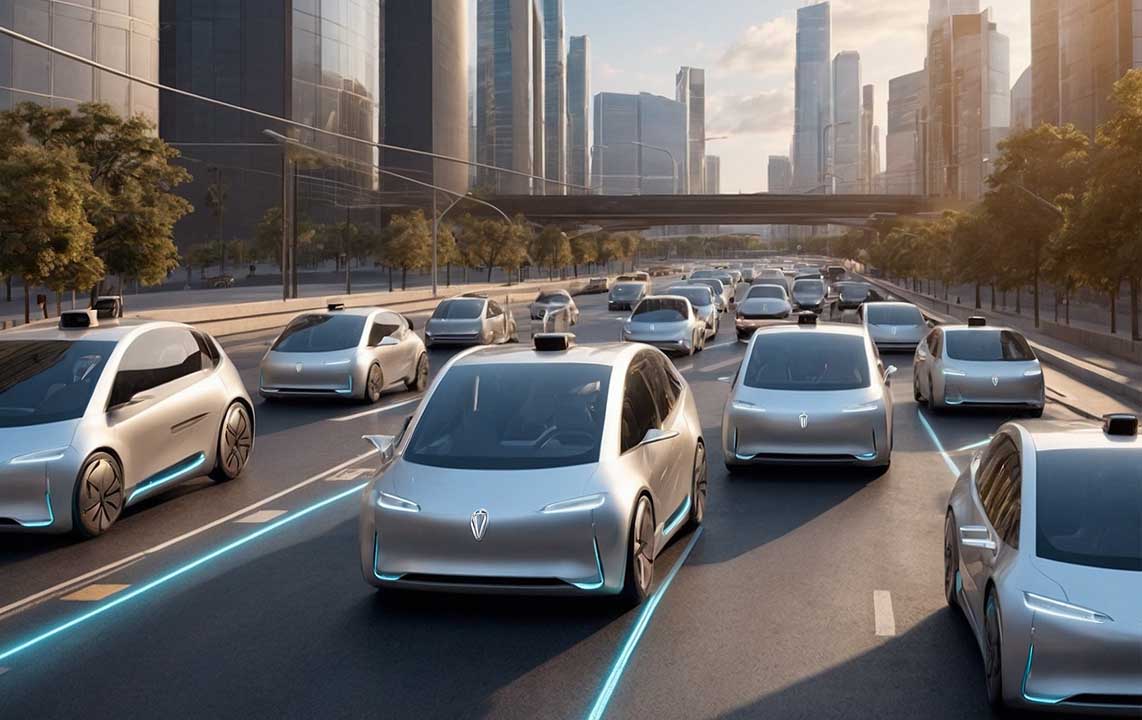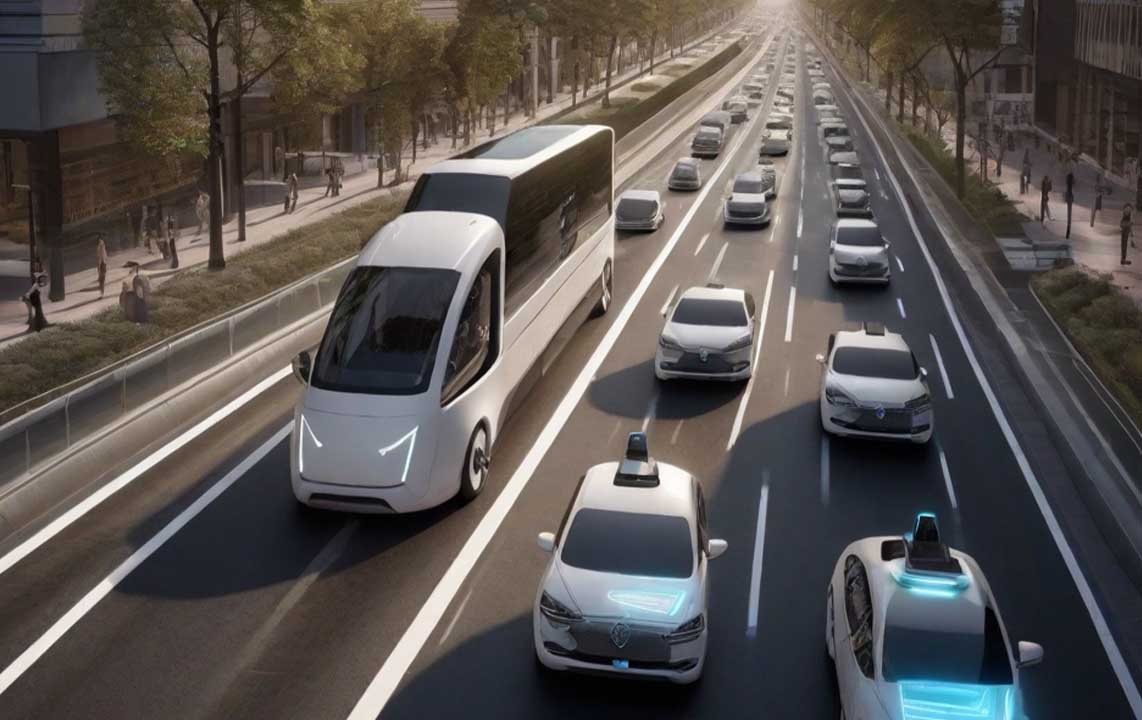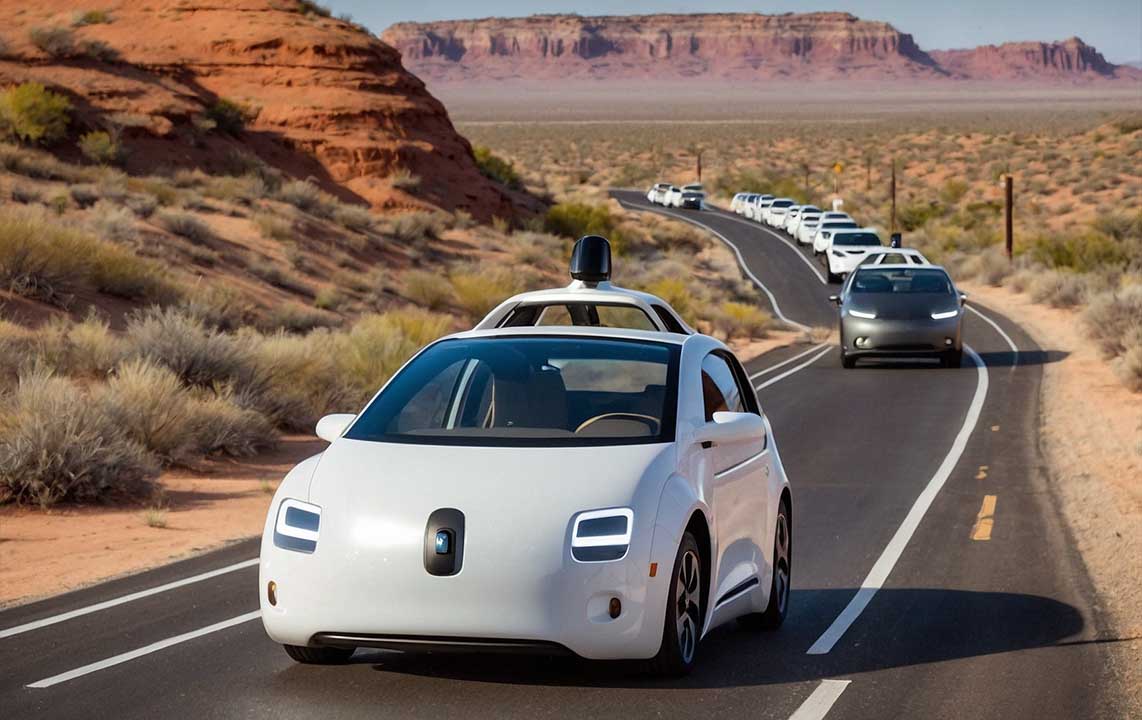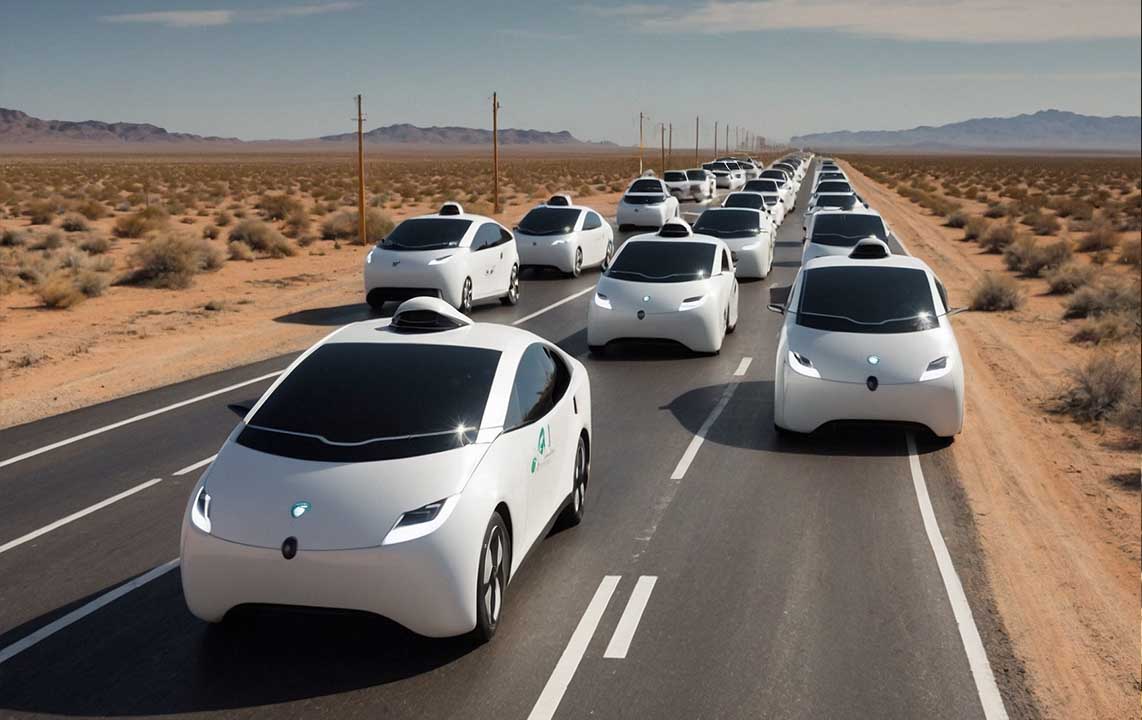In a world where technology evolves at breakneck speed, it’s not just your smartphone getting smarter – your entire commute is on the brink of a revolution. fdgsdgs
You might be wondering, “Is this the end of the road for driving jobs?” Well, buckle up, because we’re about to take a sharp turn into the future of automation.
Key Takeaway: Automation is shifting gears in the transportation industry, with self-driving vehicles poised to redefine our roads, economy, and job market. While the transition may signal a red light for certain driving roles, it accelerates the green for innovation, safety, and accessibility.
Experts are dialing in their GPS for the future, and the destination is clear: self-driving vehicles are not just a possibility; they’re an oncoming reality. The trucking industry, with its long, monotonous routes, has become the testing ground for this new transport era. Picture this: fleets of automated trucks cruising across North America, their every mile teaching algorithms how to handle the wheel better than a seasoned trucker on his thousandth cup of coffee.

Bank Tellers and Beyond: A Glimpse into Automation
Remember when a trip to the bank was as routine as your morning coffee run? Now, bank tellers are becoming as rare as a quiet morning at a bustling cafe. The rise of mobile banking and advanced ATMs has shown us that the future is less about face-to-face transactions and more about digital convenience. Just as we’ve adapted to banking without tellers, we’ll learn to navigate roads without drivers.
Vehicles as a Service (VaaS): The New Normal?
The concept of owning a car is about to take a backseat as VaaS accelerates into the spotlight. In the not-so-distant future, calling a car might become as common as streaming a movie – a luxury for some, a standard for most.
The Road Less Owned: From Possession to Access
The traditional pride of car ownership is set to downshift in favor of accessibility and convenience. Imagine a world where vehicles are more like Netflix than a nest egg, where access trumps ownership, and your ride is just an app call away. This shift could mean that soon, flaunting a car in your driveway might be akin to still owning a VCR – charming but quaint.
Table: The Shift from Ownership to Access
| Year | % of Car Owners | % Using VaaS | Notes |
|---|---|---|---|
| 2023 | 65% | 10% | Early adopters pave the way |
| 2025 | 60% | 20% | VaaS gains traction |
| 2030 | 50% | 40% | A new normal emerges |
As public transit systems ponder the integration of self-driving buses and trains, the private sector might just overtake them with automated taxis. While the government juggles safety standards and legislation, private companies are already in the fast lane, deploying fleets that could make Johnny Cab from “Total Recall” a reality.
Navigating the Legal Landscape: Automation Meets Regulation
As self-driving technology cruises closer to reality, it’s not just about the tech under the hood—it’s about the laws on the books. The road to autonomous vehicles is lined with red tape and speed bumps of regulatory concerns.
Safety First: The Regulatory Roadblock
The government’s role is akin to a traffic light, maintaining order and safety in the adoption of self-driving cars. But before they can turn the light green, they need proof that these vehicles can handle the road without turning it into a demolition derby.
Table: Steps to Legalizing Self-Driving Cars
| Step | Description | Expected Completion |
|---|---|---|
| 1 | Data Collection | Ongoing |
| 2 | Safety Validation | TBD |
| 3 | Legislative Approval | TBD |
| 4 | Public Adoption | TBD |
With lobbyists in the mix, the journey towards legalizing self-driving cars might feel like a cross-country trip with too many backseat drivers. But once enough data proves that self-driving cars can keep their cool in traffic better than a yoga instructor in a heatwave, we can expect some legal lanes to open up.
On June 16, 2017, Nevada passed Bill 69, which allows the testing of autonomous vehicles on public roads. Many other states followed suit.

The Urban Vanguard: Cities Leading the Charge
Densely populated cities, with their labyrinthine streets and teeming traffic, could be the proving grounds for VaaS. Here, the private sector might just outmaneuver regulations with the agility of a Silicon Valley startup pivoting its business model overnight.
“Hey AI, Get Me a Ride!”: The VaaS User Experience
Gone are the days of hailing cabs or waiting for the bus. The future whispers of a simpler interaction: a conversation with your AI assistant that ends with a car at your doorstep.
A Day in the Life with VaaS
Picture this: you step out of your home and, with a casual voice command, summon your ride. It’s a seamless dance of technology and convenience that could make the Jetsons jealous.
Sample VaaS Interaction:
User: “Hey AI, I need a ride to the office.” AI Service: “Of course! Your usual 8 AM ride?” User: “Yes, but can you make it a bit earlier today?” AI Service: “No problem. A car will be there at 7:45 AM. Would you like coffee en route?” User: “You read my mind.”
This isn’t just a tech-savvy user’s daydream; it’s a snapshot of the not-so-distant future. And for those wondering if this service will have personality, rest assured, the AI might just throw in a good morning joke to start your day on a bright note.
The Ripple Effect of VaaS
The impact of VaaS isn’t just about convenience; it’s a wave that could carry everyone to better mobility. From the elderly to school children, the reach of VaaS promises a level of inclusivity previously unimagined in personal transport.
Table: VaaS Impact Across Demographics
| Demographic | Impact | Notes |
|---|---|---|
| Elderly | Increased mobility | No need for driver’s licenses |
| Disabled | Enhanced independence | Customizable vehicle features |
| Children | Safer school commutes | Parental controls and monitoring |

The Societal Shift: Steering Toward Safer Roads
The advent of self-driving cars isn’t just about changing how we drive—it’s about transforming our society. The promise of safer streets is just around the corner, with autonomous vehicles leading the charge.
Drunk Driving: A Problem of the Past?
Imagine a world where the phrase “Don’t drink and drive” is as outdated as “Be kind, rewind.” Self-driving cars could park themselves outside bars and clubs, ready to whisk away anyone who’s had one too many, no questions asked—except maybe, “Home or Taco Bell?”
Data-Driven Safety: The New Co-Pilot
Self-driving cars won’t just reduce drunk driving; they’re set to overhaul road safety. By sharing real-time data, these vehicles could navigate us through the perils of the road with the precision of a seasoned pilot flying through turbulence.
The Job Market Detour: What’s Next?
It’s no secret that automation could put the brakes on certain driving jobs. But just as the horse and buggy gave way to the automobile, new opportunities will emerge. We’ll need more tech-savvy mechanics than ever before—think less grease, more gigabytes.
Under the Hood: The Tech That Drives the Future
Self-driving cars are more than just vehicles; they’re computers on wheels, equipped with an arsenal of sensors and a brain that learns as it goes. But what makes them tick, and how do they communicate to keep us safe on the road?
The Eyes and Ears: Sensory Technology
From cameras that see better than a hawk to LIDAR systems that map the world in a high-res 3D model, self-driving cars are the new superheroes of the highway. They’re vigilant, always focused, and never get tired or distracted by a text message.
Table: Sensory Tech in Self-Driving Cars
| Technology | Function | Benefit |
|---|---|---|
| Cameras | Vision | 360-degree awareness |
| LIDAR | Mapping | Precise environment modeling |
| Radar | Detection | Obstacle and distance measurement |
The Silent Conversation: Vehicle-to-Vehicle Communication
Imagine if cars could whisper secrets to each other about the road ahead. That’s the reality of vehicle-to-vehicle (V2V) communication, a system where cars share data on traffic, weather, and road conditions faster than you can say “rubbernecking.”
The Brains Behind the Wheel: AI and Machine Learning
At the heart of these vehicles is an AI that learns like a prodigy child, absorbing every mile of road experience. It’s constantly evolving, ensuring that the car’s decisions are as smooth as a jazz musician’s riffs.
Decoding Driving Automation: From Assisted to Autonomous
The journey from cruise control to cars that chauffeur themselves is mapped out in levels of automation. Understanding these levels is like knowing the difference between a bicycle and a rocket ship in terms of transportation.
The Spectrum of Autonomy: Levels 0 to 5
Let’s break down the levels of driving automation, from the cars we grew up with to the ones our kids might tell their kids about.
Table: Levels of Driving Automation
| Level | Name | Description |
|---|---|---|
| 0 | No Automation | Your classic car, all manual, all the time. |
| 1 | Driver Assistance | Think cruise control with a dash of modern tech. |
| 2 | Partial Automation | The car helps with steering or speed, but don’t take your eyes off the road. |
| 3 | Conditional Automation | The car can handle some tasks, but it’s not ready to go solo. |
| 4 | High Automation | Almost there, but still needs a human in the loop, just in case. |
| 5 | Full Automation | The car is the driver. Sit back, relax, and enjoy the ride. |

The Road Ahead: What These Levels Mean for You
As we cruise from Level 0 to Level 5, the driver’s seat becomes less about driving and more about enjoying the journey. It’s a shift that promises more freedom, more safety, and maybe a bit more time to perfect our car karaoke skills.
Now, let’s navigate the economic landscape that self-driving technology is paving.
The Economic Engine of Autonomy: Opportunities and Challenges
The shift to autonomous vehicles is not just a technological leap but an economic revolution. It’s set to reroute the job market and create new avenues for growth and innovation.
The Job Market: Redundancy and Rebirth
While automation may signal a pit stop for some traditional driving jobs, it’s also turbocharging the creation of new careers. We’re talking about a world where ‘driver’ is less about hands on the wheel and more about hands on the keyboard.
Table: Autonomous Vehicles and the Job Market
| Impact | Job Sector | Potential Changes |
|---|---|---|
| Negative | Traditional Driving Jobs | Decrease in demand |
| Positive | Tech and Development | Increase in specialized roles |
| Positive | Service and Maintenance | Shift towards high-tech servicing |
Entrepreneurial Drive: New Business Models
Just as the car gave rise to the road trip diner, autonomous vehicles could spawn entire industries. Think of services that cater to the in-car experience—because when you’re not driving, why not enjoy a mobile office or a rolling relaxation pod?
The Cost Factor: Efficiency vs. Expense
The economics of self-driving cars are a balancing act between the upfront costs of advanced technology and the long-term savings from efficiency. It’s a classic case of spend money to make money—or in this case, spend money to save money.
Visionaries at the Wheel: The Companies Leading the Charge
In the race to autonomy, some big players are not just in the driver’s seat—they’re building the car, the road, and the map.
Titans of Tech: Investing in the Autonomy
From Google’s Waymo to Tesla’s Autopilot, the tech giants are not just dipping their toes but diving headfirst into the self-driving waters. These companies are not just betting on a future with autonomous vehicles; they’re placing their chips on a complete reshaping of transportation as we know it.
Table: Key Players in Self-Driving Technology
| Company | Contribution | Noteworthy Advances |
|---|---|---|
| Google (Waymo) | Pioneering self-driving technology | Extensive real-world testing |
| Tesla | Integrating autonomy in consumer cars | Proposing a ride-sharing future |
| Uber | Experimenting with autonomous ride-hailing | Advanced trials in select cities |
| Amazon | Investing in autonomous delivery systems | Enhancing efficiency in logistics |
The Musk Factor: A Visionary’s Promise
Elon Musk, the real-life Tony Stark, is not content with electric cars or space travel. He’s promised a future where your Tesla can earn you money when you’re not using it. It’s an ambitious vision that could turn every driveway into a potential money-maker.
The Consumer’s Role: Adaptation and Adoption
As these companies push forward, the question remains: how quickly will consumers embrace a driverless future? The answer may lie in the balance between the allure of new technology and the comfort of tradition.
Conclusion: Embracing the Autonomous Horizon
The wheels of progress turn relentlessly, and in the realm of transportation, they’re turning towards a future where the term ‘driver’ may become a historical curiosity. We’ve seen how self-driving technology is not just a fanciful notion but a concrete reality, with profound implications for our economy, society, and daily lives.
The Road Taken and the Miles Ahead
From the initial skepticism to the growing acceptance of autonomous vehicles, we’ve navigated through the technological, economic, and societal landscapes that these marvels of innovation are shaping. We’ve chuckled at the thought of outdated driving jobs and marveled at the new opportunities sprouting up like roadside wildflowers.
The Key Takeaways: Looking in the Rearview Mirror
- Automation is here, and it’s not just changing how we drive—it’s redefining the very fabric of transportation.
- Jobs will evolve, as they always have, with the rise of new technology.
- Safety and efficiency are set to improve, potentially reducing road fatalities and reshaping urban landscapes.
- Adaptation is key, as consumers, workers, and policymakers navigate the transition from hands-on to hands-off driving.
As we turn off the ignition on this topic, remember that the future is not a destination but a journey. And on this journey, we’re all passengers, witnessing the unfolding of an autonomous era. So, let’s keep our minds open, our seatbelts fastened, and our eyes on the horizon—because the next great adventure in transportation is just around the bend.



